Categories > Guides and Tips

Top 15 Exotic Foods in Thailand That You Should Try
- Rot Duan (Bamboo Worms)
- Nhon Mhai (Silk Larvae)
- Tak Ka Tan (Grasshoppers)
- Jing Reed (Crickets)
- Maeng Kee Noon (Water Beetles)
- Mok Huak (Developing Tadpoles)
- Luu Muu (Raw Pig's Blood)
- Larb Leuat Neua (Raw Beef with Uncooked Blood)
- Fried Tarantula
- Larb Mote Daeng (Red Ants Eggs)
- Scorpions
- Khai Khao (Balut)
- Gong Chae Nam Pla (Raw Mantis Prawns)
- Baak Bpet (Fried Duck Beaks)
- Goong Ten (Dancing Shrimp)
Hey there, food explorers! If you’re up for a culinary rollercoaster ride, Thailand is the place to be.
Thailand is famous for its vibrant street food scene and a wide array of exotic delicacies that will leave you craving for more.
In this article, we’ll delve into some of the most fascinating and unique dishes you can find in Thailand. Get ready to unleash your inner foodie and savour these out-of-the-box treats!
Rot Duan (Bamboo Worms)
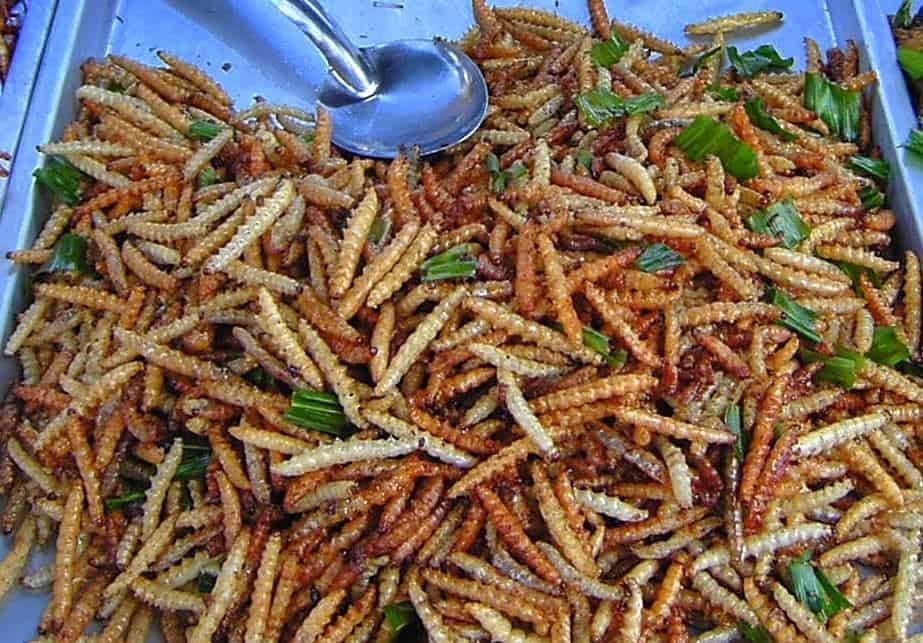
Let’s start with something a little wiggly – rot duan, aka bamboo worms. These crispy critters might sound weird, but trust me, they’re a real delight.
Rot duan are typically found inside bamboo stems and are harvested for consumption. During the rainy season in northern Thailand, you can find these worms thriving.
Although the idea of eating worms might seem strange at first, they are actually rich in protein and have a crunchy texture when they are deep-fried or stir-fried with some seriously flavorful spices and garlic.
Some describe their taste as similar to fried potato chips or grilled cheese. Not only are they a popular fried insect in Thailand, but they also pack a healthy punch with their high protein content of 30% (even more than chicken’s 24%).
Local tip: When trying rot duan, pair them with a spicy chilli dipping sauce or sprinkle them over dishes like salads or stir-fries for an added protein boost and unique flavour.
Nhon Mhai (Silk Larvae)
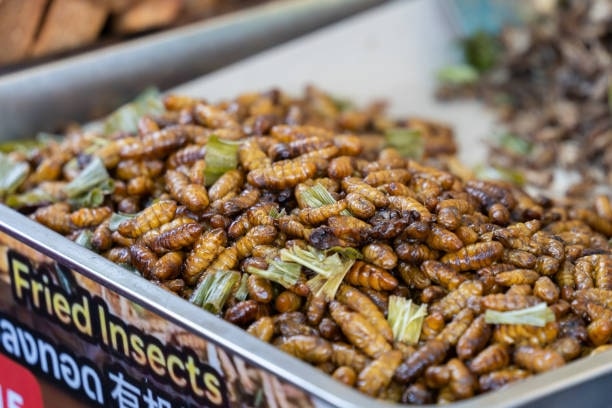
Nhon mhai, or silk larvae, are soft and silky larvae that are a true Thai specialty. These larvae are harvested from silk cocoons and are a common ingredient in Thai cuisine.
Silk larvae are known for their soft and creamy texture, making them a unique addition to various dishes. They are often cooked in a flavorful broth or stir-fried with aromatic spices, like kaffir leaves.
Thay have a unique taste reminiscent of creamy tofu with hints of herbs.
Nhon mhai pairs perfectly with soy sauce and pepper, offering a delightful combination of flavours. Unlike their crunchy counterparts, silk larvae have a soft texture that resembles puffed rice, making them an easy and enjoyable snack option.
Local tip: Silk larvae are best enjoyed when they have a soft and creamy texture. Try pairing them with soy sauce and pepper for a delightful combination of flavours
You can also add them to soups or use them as a filling for omelettes for an extra protein punch.
Tak Ka Tan (Grasshoppers)
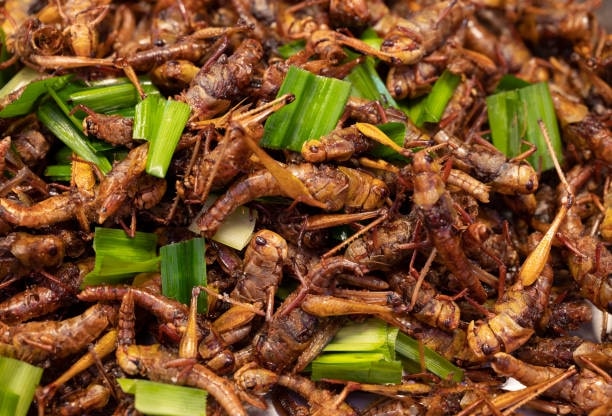
Tak ka tan, aka grasshoppers are a popular snack or appetiser in Thailand. Imagine them deep-fried to perfection and seasoned with a spicy blend of goodness.
The result? A crispy, savoury treat that’ll satisfy your cravings. So, gather some courage, take a bite, and let the flavours of these little jumpers surprise you.
Local tip: Enjoy them as is or with a sprinkle of salt and chilli powder. They are a popular street food item, so look for them from local vendors for an authentic taste.
Jing Reed (Crickets)
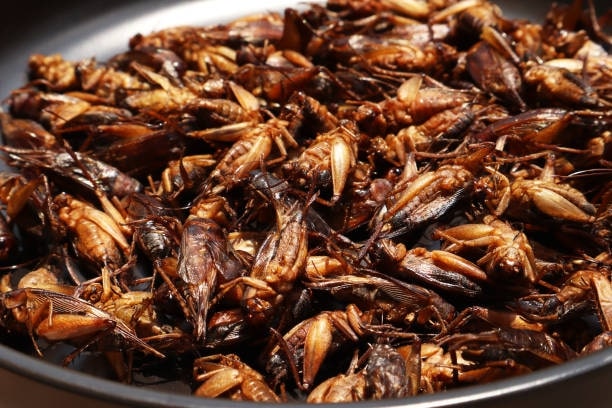
Crickets? Yes, you read that right! Jing reed, or crickets, are another intriguing delicacy found in Thailand.
They are often deep-fried or roasted and can be enjoyed as a crunchy snack or added to various dishes. Jing Reed has a subtly mild taste that can be likened to popcorn or nuts.
While they don’t have an overpowering flavour, their pleasant taste adds a unique element to the culinary experience.
These little critters are often fried to perfection and sprinkled with a blend of spices, creating a crunchy and flavorful snack. Crickets are not only a great source of protein but are also eco-friendly, requiring less resources compared to traditional livestock.
Local tip: Deep-fry the crickets until they become crispy and fragrant. Enjoy them as a crunchy snack or as a unique addition to salads or noodle dishes.
Maeng Kee Noon (Water Beetles)
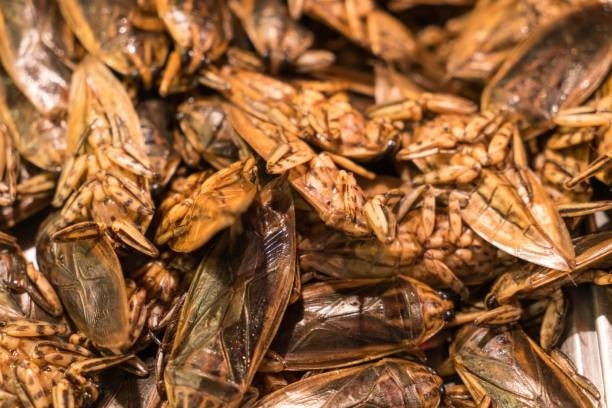
Maeng kee noon, also known as water beetles, are a prized delicacy found in Thai freshwater regions. These aquatic insects offer a rich taste that is highly regarded by locals.
They are commonly grilled or stir-fried with aromatic herbs and spices, creating a delightful blend of crunchiness and earthy flavours.
When purchased from street vendors, maeng kee noon is typically deep-fried. Additionally, they are sometimes used to create a sauce that pairs well with rice or fried pork skin, adding a unique twist to your meal.
It has a taste that can be compared to a combination of french fries and cucumber. While you can consume the entire insect, it is advised to remove the outer wings before enjoying this flavorful delicacy.
Local tip: Cook them with aromatic herbs, garlic, and chilli for a delicious combination. The beetles offer a crunchy texture and a unique taste that pairs well with steamed rice or served as a side dish.
Mok Huak (Developing Tadpoles)
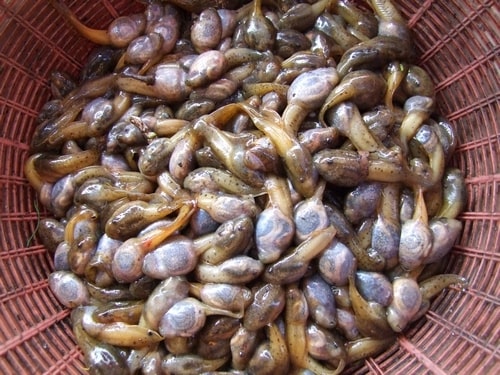
Hold on tight as we hop into a curious dish called mok huak, or developing tadpoles. Yes, you read that right!
These tiny amphibians are harvested during the rainy season when they are still in the development stage and are found mostly in the northeastern part of Thailand.
The dish is typically prepared by steaming or boiling the tadpoles with herbs and spices, creating a unique blend of flavours.
The texture can be a bit challenging for some, but if you’re up for trying something truly out of the ordinary, this dish might just leap into your list of memorable culinary encounters.
Local tip: Enjoy them as a unique addition to soups or stir-fries, where their soft and gelatinous texture adds an interesting element.
Luu Muu (Raw Pig’s Blood)
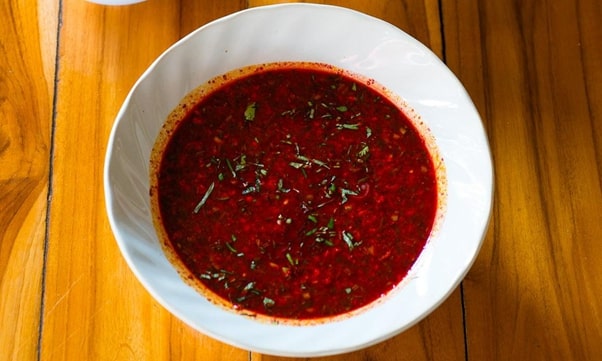
For the truly adventurous, luu muu, or raw pig’s blood, is an exotic delicacy to consider from the northern part of Thailand. This dish may not be for the faint of heart, as it involves consuming fresh pig’s blood in its raw form.
The blood is usually mixed with spices and herbs, creating a distinct flavour profile. Luu muu is often enjoyed as a dipping sauce or added to soups and stews, offering a rich and iron-packed experience.
Local tip: Use it as a condiment for grilled meats or enjoy it with steamed vegetables for a distinct taste.
Larb Leuat Neua (Raw Beef with Uncooked Blood)
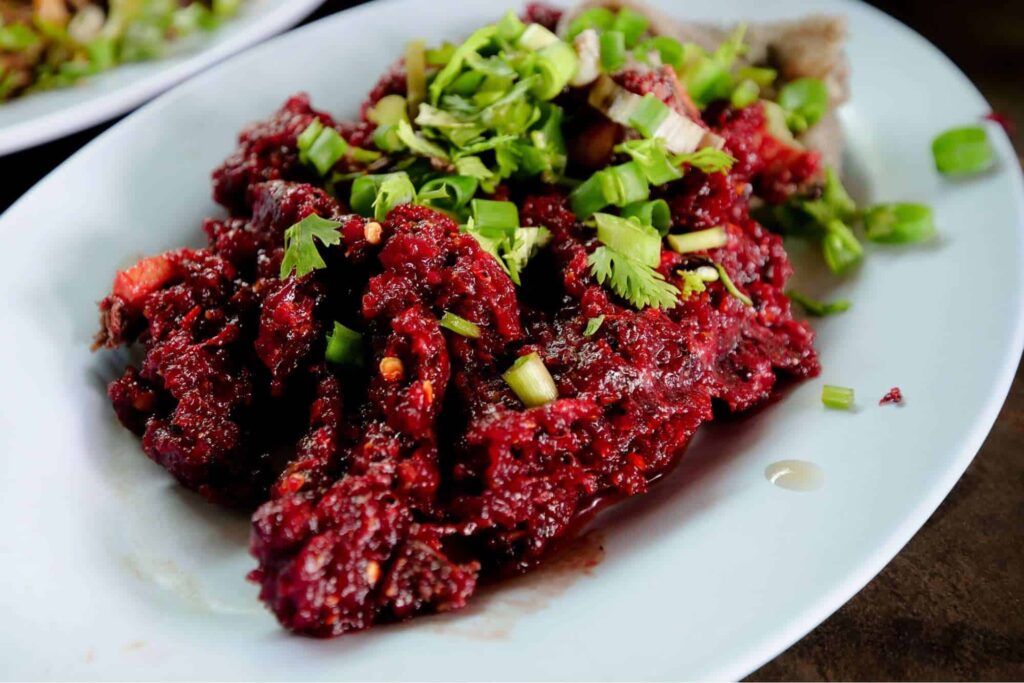
Another dish that pushes the boundaries of culinary norms is larb leuat neua, or raw beef with uncooked blood from Isan. As the name suggests, this dish consists of raw beef mixed with fresh uncooked blood.
The blood acts as a binding agent and adds a unique flavour to the dish. Typically seasoned with herbs, spices, and lime juice, larb leuat neua offers a bold and intense taste for those willing to venture into uncharted flavour territories.
Local tip: To fully appreciate this dish, mix the beef and blood thoroughly with herbs, spices, and lime juice. The result is a bold and intense flavour that is best enjoyed with sticky rice and fresh herbs for balance.
Fried Tarantula
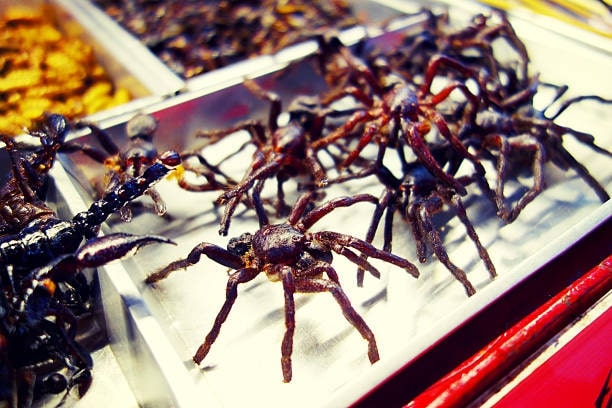
Arachnophobes, beware! Fried tarantula is a crunchy and popular street food snack in some regions of Thailand where they are deep-fried until crispy and seasoned with a blend of spices.
If you can overcome the initial hesitations, you’ll discover that tarantulas have a crunchy texture and a taste that some describe as similar to crab or chicken.
While the thought of munching on a tarantula may be unsettling for some, those who dare to try it will be rewarded with a surprisingly tasty and crispy delicacy.
Local tip: When indulging in this crunchy delicacy, look for vendors who prepare them fresh and ensure they are cooked thoroughly. Sprinkle them with salt and lime juice for added flavour. Take a bite and embrace the crispy texture and unique taste.
Larb Mote Daeng (Red Ants Eggs)
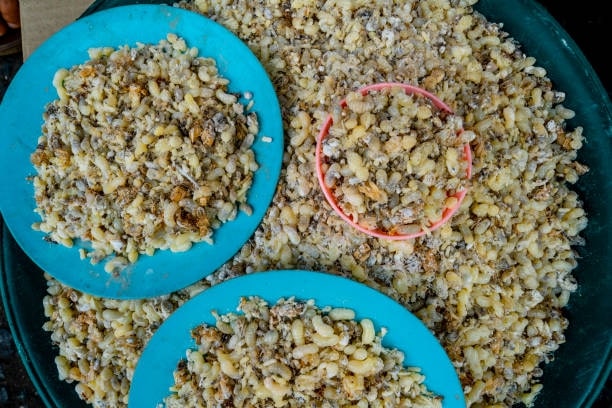
Larb mote daeng or red ants eggs are collected from anthills that are typically mixed with herbs, spices, and lime juice, resulting in a tangy and slightly sour taste.
The eggs themselves have a unique texture, similar to caviar.
Local tip: When enjoying Larb Mote Daeng, the red ants eggs dish, embrace the unique tangy flavour by mixing the eggs with herbs, spices, and lime juice.
The eggs are typically the main ingredient in the salad, providing a distinct taste. For an added touch, consider adding fresh spring greens to complement the texture and add a refreshing element to this flavorful dish.
Scorpions
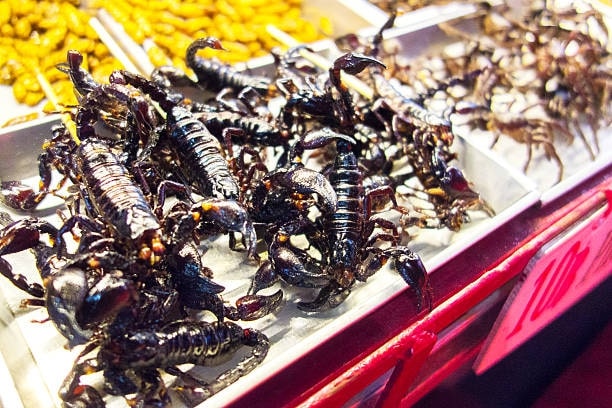
Scorpions, a popular street food in Khao San Road, undergo a process of deep-frying to achieve perfection.
They offer a surprisingly mild flavour that delights the palate when seasoned with aromatic spices . The crispy texture of fried scorpions is often compared to that of french fries, while their taste is likened to raw shrimp, adding to their unique appeal.
Local tip: When it comes to eating scorpions, make sure to choose vendors who prepare them fresh and cook them thoroughly. Opt for deep-fried scorpions for a crispy and flavorful experience.
Enjoy them as a unique street food snack and dip them in a tangy sauce to complement their crunchy texture.
Khai Khao (Balut)
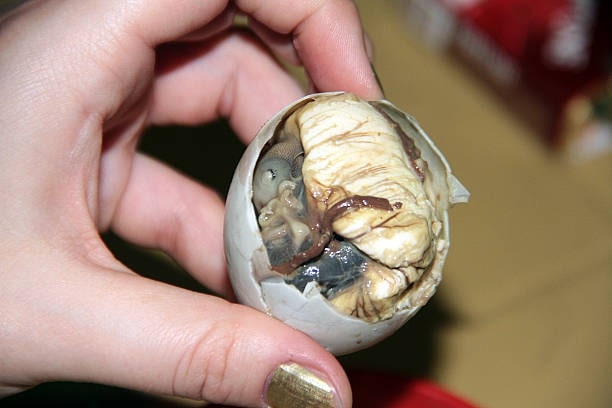
This Southeast Asian delicacy is a fertilised duck egg with a partially developed embryo inside. Although it might sound unusual, it’s a popular street food enjoyed by many, especially in the Philippines and in Vietnam.
The flavours and textures can be intense, with the egg white and yolk mingling with the tender, partially formed duck embryo. When cooked, balut is typically served with a side of salt and chilli for added flavour.
It’s not for the faint of heart, but if you’re up for a daring taste adventure, khai khao awaits!
Local tip: To enjoy Kai Khao, start by gently cracking the shell and peeling it away. Savour the rich and creamy yolk, which is the highlight of this dish.
Add a sprinkle of salt or dip it in a mixture of salt, vinegar, and chilli for added flavour.
Gong Chae Nam Pla (Raw Mantis Prawns)

For those seeking a truly unconventional experience, gong chae nam pla, or raw mantis prawns, might just fit the bill. These delicate crustaceans are served raw and are marinated in a spicy fish sauce dressing.
The combination of the raw prawns and the bold flavours of the sauce creates a taste sensation that is both intriguing and unforgettable. If you’re a fan of raw seafood, this dish is a must-try!
Local tip: When enjoying Gong Chae Nam Pla, which features raw mantis prawns, freshness is key. Look for reputable seafood vendors who handle the prawns with care.
Take small bites to fully appreciate the delicate flavours and textures.
Baak Bpet (Fried Duck Beaks)
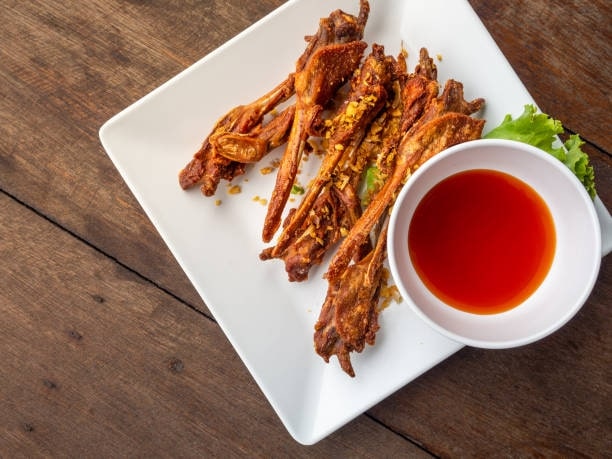
Quack your way into an unusual delicacy – baak bpet, or fried duck beaks. These crunchy morsels are deep-fried until golden and crispy, offering a unique blend of textures and flavours.
While they may require a bit of effort to eat, the satisfaction of crunching into a duck beak will leave you with a crunch and a hint of duck flavour.
Local tip: When indulging in this delicacy, look for vendors who fry them until they are golden brown and crispy. Enjoy them as a street food treat, holding the beak at one end and nibbling on the tender, crispy portion.
Dip them in a tangy sauce for an extra burst of flavour.
Goong Ten (Dancing Shrimp)
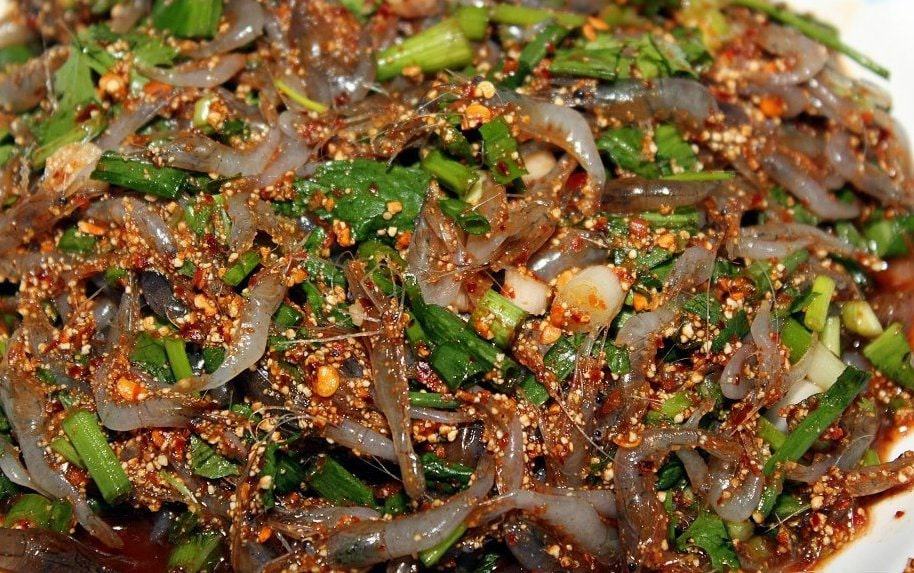
If you’re up for an interactive and lively dining experience, go with goong ten, also known as dancing shrimp. This dish features tiny live shrimps that are marinated in a spicy dressing.
The shrimps are still alive when served, hence the name “dancing shrimp.” It’s name comes from the shrimp’s vigorous movements when doused with seasonings like lime juice, chilli, and garlic.
Local tip: To fully enjoy the unique experience of Goong Ten, it’s important to eat the live shrimp quickly after they are seasoned. The shrimp will still be moving, and the sensation of their movement adds to the novelty of the dish.
Take small bites and let the flavours unfold on your palate. Remember to have a refreshing drink nearby to cleanse your palate between bites.





